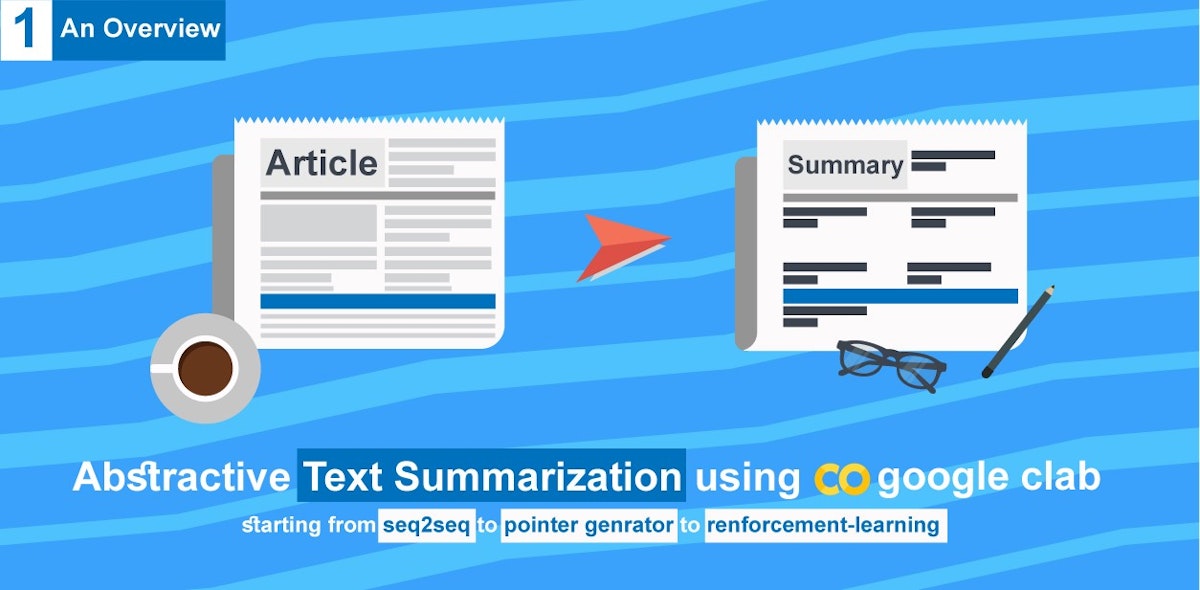22,746 reads
Text summarizer using deep learning made easy

Too Long; Didn't Read
In this series we will discuss a truly exciting natural language processing topic that is using <strong>deep learning techniques to summarize text </strong>, t<a href="https://github.com/theamrzaki/text_summurization_abstractive_methods" target="_blank">he code for this series is open source</a> , and is found in a jupyter notebook format , to allow it to run on google colab without the need to have a powerful gpu , in addition all data is open source , and you don’t have to download it , as you can connect google colab with google drive and put your data directly onto google drive , without the need to download it locally , read<a href="https://hackernoon.com/begin-your-deep-learning-project-for-free-free-gpu-processing-free-storage-free-easy-upload-b4dba18abebc" target="_blank"> this blog </a>to learn more about google colab with google drive .L O A D I N G
. . . comments & more!
. . . comments & more!

